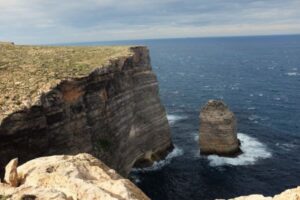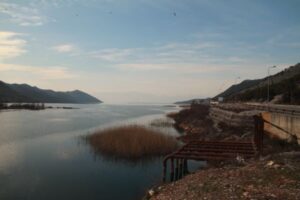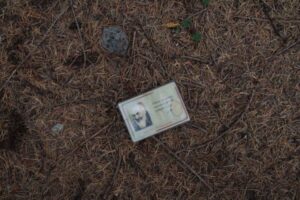Text and photos by Matthias Canapini* – Unimondo**
This tenth episode is set in Italy (read previous episodes here: first, second, third, fourth, fifth, sixth, seventh, eighth, ninth)
In the course of my research on the main routes of migrants and refugees along the borders of Europe, I also focused on the maritime borders, specifically Ancona and Bari. I want to tell you a part of this story, composed of percentages, anecdotes and sometimes unseen data.

In the Marche region of central Italy, the border is the port of Ancona. It is a Friday evening and a handful of university students, legs crossed, are drinking Spritz at the ‘Càlamo’ or ‘Tredici Cannelle’ fountain, a sculpture by the artist Pellegrino Tibaldi. “The Adriatic ports continue to be a place of disembarkation for foreigners who arrive on regular ferries and are subjected to procedures that are anything but linear and clear. The result is the rejections that continue characterising this border section. According to data for the period January-October 2017, reported by the Parliamentary Commission of Inquiry into the Reception, Identification and Expulsion System, rejections at Adriatic ports appear to be quantitatively relevant. From the port of Ancona, 223 people were rejected and readmitted; from the port of Bari, 2,869; from the ports of the province of Brindisi, 1,281; from the port of Venice, 107. According to Eurostat data, 4,359 people were refused entry at Italy’s maritime borders in 2017.”
Speaking, with their backs to each other, are Danilo and Valentina, two members of the Embassy of Rights, an ODV association in the Marche region that collaborates with the European Melting Pot project. “The borders of the Adriatic ports are anything but peaceful, according to the information we have gathered. In the ports of Bari, Brindisi, Ancona and Venice, according to us, the A.S.G.I. (Association for Legal Studies on Immigration), the SOS Diritti association and the Melting Pot project, serious violations of migrants’ rights are constantly taking place, especially regarding access to information, the procedures for international protection and how refusals are carried out. It seems that the Adriatic ports represent the grey areas of Italy. The practices applied result in the rejection of a significant number of foreign nationals, who are effectively denied access to asylum procedures. The lack of adequate assistance and monitoring contributes to the invisibility of these places and what happens there. The Embassy of Rights (made up entirely of volunteers) was set up in 2006 to promote civil rights because there can be no freedom and democracy unless fundamental rights are recognised for all people. The rights to health, housing, work, income and freedom of movement are too often violated by institutions. The Embassy of Rights is another institution where all those invisible subjects who live in the neighbourhoods of our cities can find a voice.”
Valentina continues: “That time in December, when we helped two girls from Homs (Syria) to disembark, there was an uproar because they were threatened with being sent back to Greece with a six-year-old child in tow. Luckily we were alerted by a Syrian boy living in Ancona, we contacted Amnesty International, we hosted them for one night through the COOSS cooperative and the next morning they were gone. However, there are two problems: there is no reception centre at the port, and the police often do not inform the prefecture, even though they know that two migrants (and a child) from Hotspot could very well be asylum seekers. This is effectively an absent service and there is no systematic monitoring of police practices. At other times, while formally there, the agencies can only intervene on the recommendation of the authorities and do not have access to the disembarkation areas. In short, it is second-hand monitoring, because there is no supportive presence inside the port; there is little cooperation. Although the number of irregular arrivals in Europe, by land and by sea, has fallen by 95% compared to the summer of 2015, we are still counting the victims: three deaths in recent years, the last on Christmas Day, sometimes buried under unmarked gravestones, as in Calais or Bosnia.”

A few years ago, on the afternoon of 25 December, a young migrant, possibly of Afghan origin, died in the emergency room of the Ospedali Riuniti hospital in Ancona from very serious injuries sustained after being run over by the wheels of a lorry to which he was clinging. The accident happened between Via Flaminia and Via Conca, in the Torrette area, where the lorry was passing after unloading at the port of Ancona. The boy, who had no papers, was rescued by the 118 ambulance and taken to hospital, where he died. “They are mostly from Syria and Afghanistan. We also spoke to some young men who were injured when they fell from the trucks, helped by a petrol station attendant stationed at a roundabout outside Ancona where the trucks slowed down. There are only a few of us guarding the ports, and now there is the security decree which, by closing the SPRARs, is leaving so many migrants and operators on the streets.”

A random browse through the digital archives of the Melting Pot Europe project reveals an anachronistic chronology of escapes and deaths: Ancona. Hidden in a refrigerated lorry, they risked their lives to reach Europe – The deadly Adriatic route reopens as hope for refugees trapped in Greece; Syrians rejected at Ancona port – The return of Syrian refugees to Greece from Adriatic ports continues unabated; Ancona, two illegal immigrants found dead in lorry just arrived in port – They were trying to enter Italy, killed by ammonia fumes; Amir, a windy boy crushed by lorry – A 19-year-old illegal immigrant, Amir Rohol from Afghanistan, was crushed by the lorry he was trying to escape in. The foreigner was probably clinging under the lorry, one of the many stupid refugees trying to evade port controls. The young man was found along the SS 76, at the Ancona Nord tollbooth. Seriously injured, he died that evening in Torrette hospital. The traffic police are investigating; Ancona, 67 illegal immigrants in a kangaroo lorry – An articulated lorry modified to transport illegal immigrants was blocked; Ancona, illegal immigrants hidden in detergent. Four minors among them – The financiers identified the eight, all Afghans, during a check on the lorry, which had just arrived from Greece. Among them was a 12-year-old boy.
A crowd of customers stormed the bar. Marta, the association’s third volunteer, shouts: “There is a great desire and need to take to the streets again, especially without flags or acronyms. It seems that in Italy we are all racist or indifferent, instead there is a strong reaction, a ferment, as today’s procession showed, with four thousand participants. Silence, a slow approach, thousands of young people on the streets for climate change. A very long, colourful procession, shouting through megaphones, giving us back our future, inviting even those watching from their balconies to take to the streets and join the protest. Thoughtful, respectful protests against a system that parks disabled people, migrants, and psychiatric patients in invisible places; against a system that eats living beings and spits them out in large numbers; against a mindless society that keeps building walls.” Sharp port fences pierce the incoming bad weather.
* Matthias Canapini was born in Fano, central Italy, in 1992. He travels at a slow pace to tell stories with his notebook and camera. He has published five books since 2015 and is currently a news editor and reporter for the news outlet Unimondo
** Unimondo, founded on 10 December 1998 under the auspices of the Fontana Onlus Foundation, is an online news outlet dedicated to providing authoritative content on peace, sustainable human development, human rights and environmental issues. It offers diverse and timely information, amplifying the voices of different facets of Italian and global civil society. As the Italian hub of the OneWorld network, founded in London in 1995, it is part of a global network with 11 centres worldwide and 1,600 partner associations



























